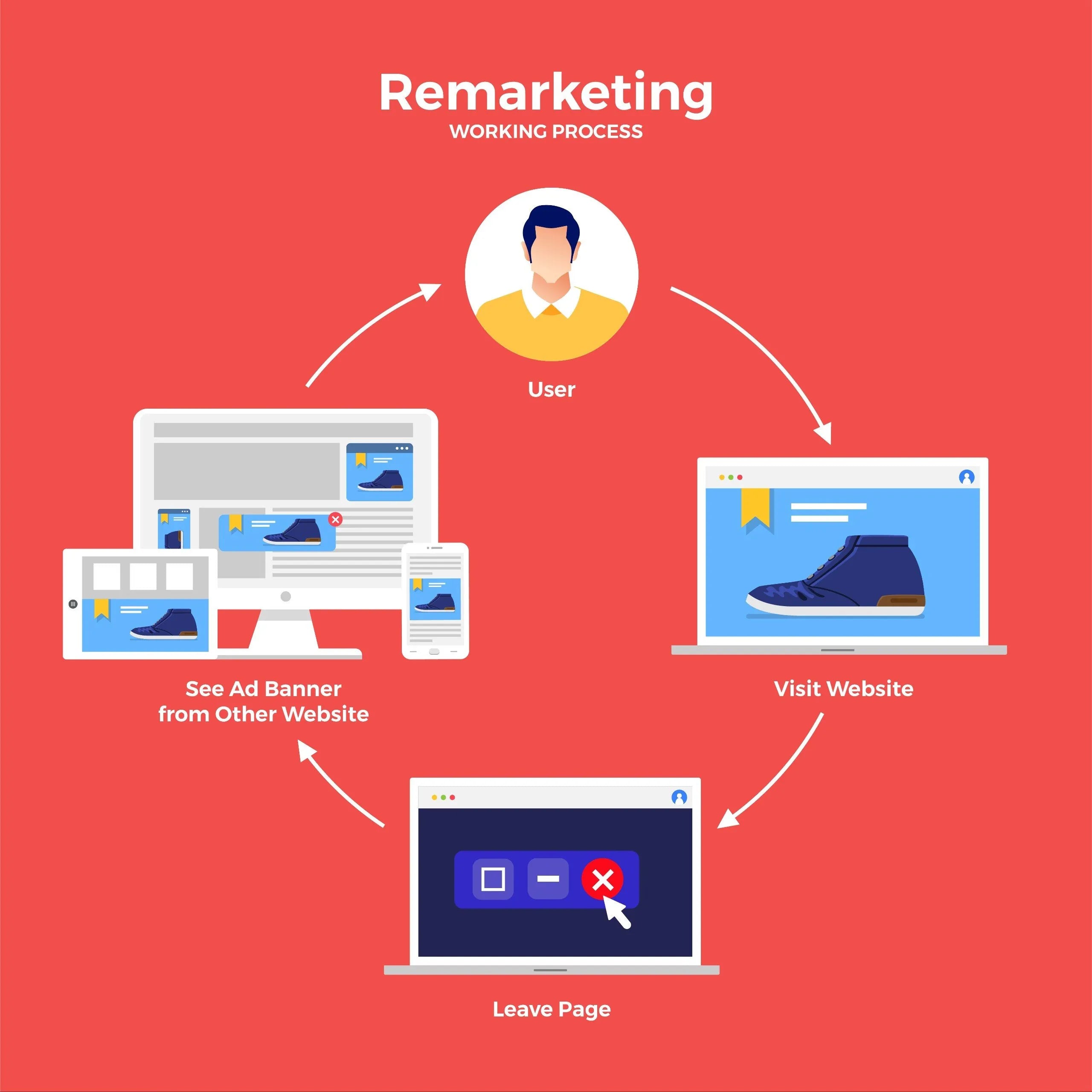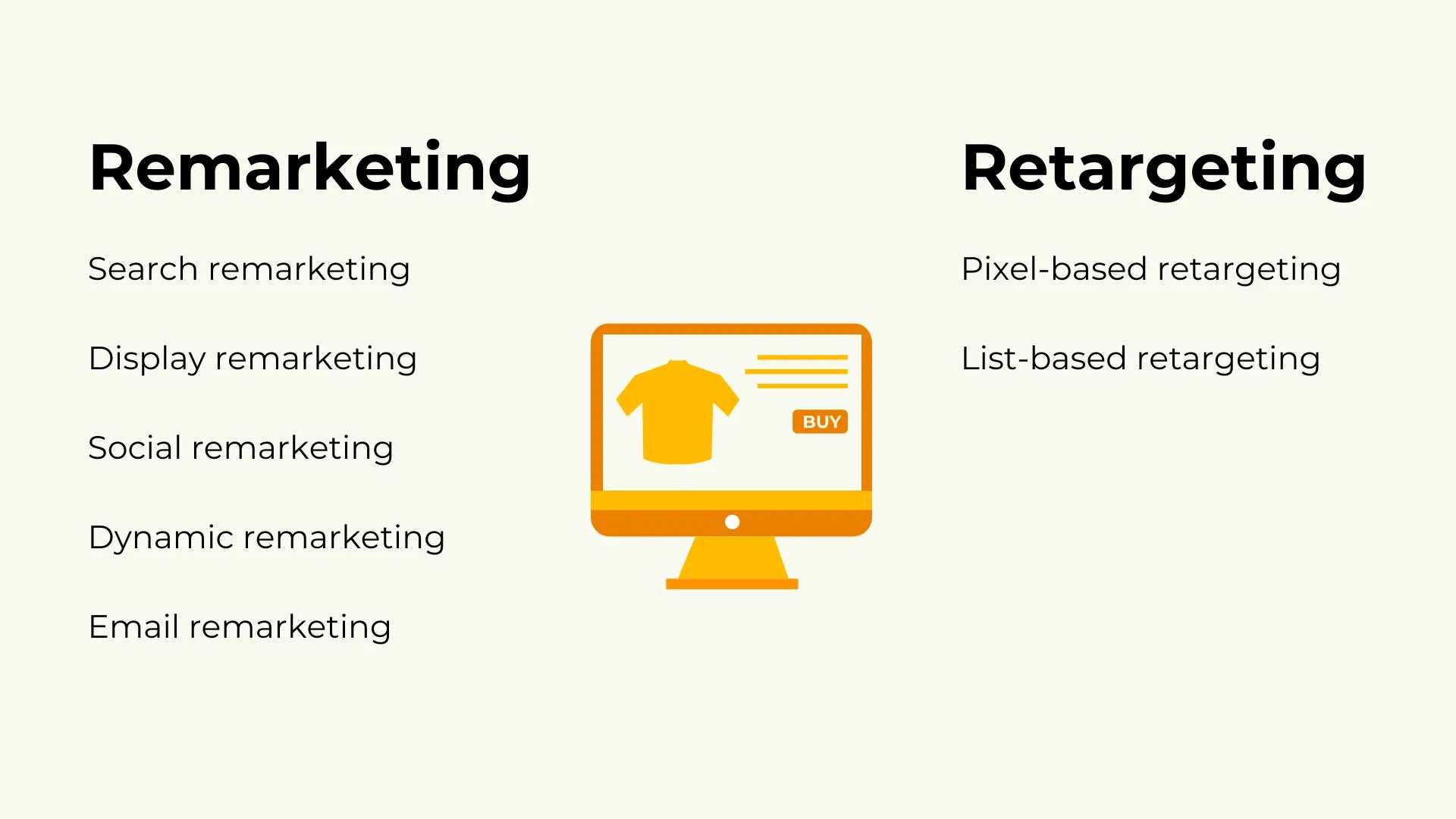eCommerce Remarketing and Retargeting: The Secret to Keep Customers Coming Back [+ Best Strategies]
![eCommerce Remarketing and Retargeting: The Secret to Keep Customers Coming Back [+ Best Strategies]](http://gempages.net/cdn/shop/articles/Retargeting_Strategies_-_thumbnail_1024x1024.webp?v=1716194143)
Doing eCommerce is not light work. To upkeep your business and make it prosper, an elevated marketing plan is not to be overlooked. No matter which stage your business is in, the keyword is loud and clear: Conversion.
There are different tactics that can turn a passerby into a repeated customer, and a top-notch remarketing/retargeting strategy is one of the most well-known.
But, how exactly does it work, and why do sellers need to familiarize themselves with these terms? This blog post will go into detail about different remarketing/retargeting strategies that will keep your customers coming back for more.
Learn more: 5+ FOMO Marketing Techniques for Effective Conversion in eCommerce
What is Remarketing/Retargeting?

A typical remarketing process that demonstrates how a user finds a way back into your store through ads. (Source: Shutterstock)
First thing first, we need to address the elephant in the room: are remarketing and retargeting different?
In a nutshell, the most prominent difference between these two terms is the general purpose:
- Retargeting focuses on bringing back visitors who have previously interacted with your website but have yet to convert. This is often done via a series of paid ads on social media and platforms like Google Ads.
- Remarketing aims to increase customer lifetime value. This means the goal is to keep existing customers engaged with one’s products and stay updated regularly on the brand. A common tactic in remarketing is through the use of email marketing.
Now that we have learned of the differences, it is important to reiterate the common ground that these two terms share: to keep customers coming back and boost conversion rates.
Thus, you will see remarketing and retargeting be used interchangeably in many marketing articles, including this blog post. While certain campaigns lean more toward one or another, the advantages are comparable between the two.
The next part will give you more insights into the benefits of remarketing/retargeting for your eCommerce business.
Learn more: How to Build Small Business Branding — Strategies, Examples, and Ideas
Why You Need Remarketing/Retargeting for Your eCommerce Business
Brand awareness
Branding grants your business a distinct image, good branding instills that identity in your customers’ minds in the long run. Here are some significant brand awareness statistics that you should know:
- 81% of consumers demand trust as a requirement before buying from a brand
- Authenticity is a deciding factor when choosing which brands to support, as stated by 86% of consumers
- 55% of consumers are willing to purchase if they feel like a brand’s story speaks to them
In the realm of remarketing/retargeting, a personalized ad or email that addresses your customer’s shopping habits is an efficient tool to reel them back in for more. When buyers become more familiar with your brand, they will organically come to you as opposed to the competitors.
Learn more: How to Sell Personalized Items on Shopify in 2023
Customer retention
When you leave a positive impression on your prospects/customers, the chance of them visiting your website again increases. This can be achieved through the handling of remarketing and retargeting. By staying in your customers’ sights regularly, they will feel more inclined to make repeat purchases, hence brand loyalty is organically formed.
As certain campaigns will cater to one term more than the other, customer retention is often maintained with the use of frequent remarketing. Apart from the personalized emails that get sent straight to their inboxes, exclusive incentives are also brilliant elements that brands can offer to their loyal customer base to strengthen the buyer-seller bond.
Maximize Customer Engagement and Store Sales with Shopify Automated Emails
Conversion rates
Conversion is the utmost priority that is on top of any seller’s mind. It is the one factor that keeps the business afloat and growing.
For remarketing/retargeting campaigns, you are blessed with a unique factor: the customer’s existing interest in your business.
No matter if they have come to the final step (but did not convert) or simply spent a few minutes checking your homepage - you have gotten valuable information to design a personalized ad that ensures higher conversion rates.
Moreover, remarketing/retargeting ideas come along with cost-efficiency. For example, certain buyers will be more receptive to an ad that shows an item at a discounted price, since they have looked at this product on your site before. Whichever reason got them to not proceed to the end of the sales funnel last time might be omitted with the use of this retargeted ad.
Shopify Conversion Rates: A Beginner’s Guide
Maximize Digital Success With Conversion Rate Optimization Course
Types of Remarketing and Retargeting for Your Consideration

Types of remarketing and retargeting strategies for eCommerce businesses.
Let’s get into the nitty gritty: the most common types of remarketing and retargeting that can help maximize your store’s conversion rates.
Types of Remarketing
Search remarketing
Search marketing uses data collected from the browsing history of a user on your website to create tailored ads that appear on the Search Engine Results Pages (SERPs). For Google Ads, this function is known as Remarketing Lists for Search Ads with Analytics (RLSA). The practice is straightforward: if a user viewed a product but did not add to cart, an ad of that specific page will appear on their SERPs.
Display remarketing
Using the same principle as search marketing but differs in the platform, display marketing refers to paid advertising on third-party websites to reach users who have visited your site and lead them back to you. These ads are usually visually distinctive and can be shown on websites that belong to the Google Display Network.
Social remarketing
Social remarketing works well for eCommerce businesses that are trying to up their social media game. You can show targeted ads for visitors who either have wandered on your site or engaged with your content on a social media platform. These ads will pop up on their feeds as they go about their daily scrolling.

Dynamic remarketing
Dynamic remarketing does not stop at targeting your past visitors but goes beyond and analyzes a product viewed by them to present a visual, personalized ad on other platforms. This type of remarketing streamlined the shopping journey, where customers can resume browsing more efficiently with one click.
Email remarketing
If you are looking for an alternative to paid advertising, email remarketing could be your next solution. Instead of using visual ads to grab the user’s attention, you can meet them right in their inboxes. Emails regarding cart abandonment, upcoming sales, monthly newsletters, exclusive deals, etc. are extremely common. Wondering how to build an email list? It is as easy as using a lead-collecting form in exchange for discounts as visitors land on your site.
Delve into other methods of email marketing here: How to Grow Your Shopify Email List with Website Popups?
Types of Retargeting
Pixel-based retargeting
The term pixel-based might not ring a bell, but you could be familiar with the tasty treat that is offered whenever you visit a new website.
That’s right, we are talking about ‘cookies’ - pieces of data that a website sends to your computer to simplify your next visit. Essentially, pixel-based retargeting relies on users accepting cookies to collect the browsing activities and create tailored ads.
Bonus point: if the user visits your site first, and then proceeds to the next one that is in the same advertising network, you will receive ad priority, i.e. they will be reminded of your store above the others.
List-based retargeting
If you have acquired users’ contact information (e.g. email address), list-based retargeting is a sufficient method to consider. Simply upload the database to a platform like X or Facebook to start the ad campaigns.
Disclaimer: this strategy is often hit-or-miss since the email users provided on your website and the platform have to match. However, the result can be highly personalized ads that speak to potential shoppers directly.

4 Remarketing/Retargeting Strategies to Utilize Today
We have covered the benefits and types of remarketing/retargeting, now let’s go over our picks for the best eCommerce remarketing/retargeting strategies that any seller can make use of.
Segment your target audience
Let’s touch base with the most crucial step in remarketing/retargeting: segmenting your audience.
Your job is to observe the behaviors of your visitors, put them into groups, and tailor the message to send them on-the-dot ads.
For instance, you can segment your audience based on their purchase frequency (first-timers, returning shoppers) or specific actions (cart abandonment, product searches, page cookies). This way, the ads will seem personalized and remain more memorable.
Implement mobile-first remarketing/retargeting
A mobile-focused web design has become a crucial marketing feature for both non-commercial and eCommerce sites, following the boom of online shopping. These days, where a palm-sized device can provide an abundance of information at any given moment, website owners can’t risk overlooking this implementation.
With 68% of paid search clicks occurring on mobile phones, it is clear that the design of these portable devices is the bull’s-eye for retargeted ads. Remember to stay consistent across all platforms and devices to endorse a cohesive brand identity.
Pay attention to the content and frequency of your ads
Customers will feel more inclined to visit your website again if they find your ad content intriguing, and when they are not bombarded by it every passing minute during their social media time.
When it comes to retargeting advertisements, the secret lies in the copies. Are they clear and convincing enough to secure a click from your buyers? Do they contain the targeted keywords that catch your customer’s eyes at a glance? Finding answers to these questions will take you closer to the ultimate goal of remarketing/retargeting.
In regard to frequency, the dreaded ‘ad fatigue’ is your kryptonite. No matter how well-crafted your campaigns are, showing them too frequently will annoy your customers and sabotage the marketing tactic. In this case, setting up ad sequencing and frequency cap is a must. While ad sequencing provides users with a series of ads in your desired order to avoid burnout, a frequency cap helps limit the number of times an ad appears to a specific user in a certain time frame. You can either utilize one of the two or both, depending on your strategy.
Pro tip: Want to elevate your eCommerce copywriting skills? Check out our blog: Transforming Words into Wealth: 10 copywriting hacks for the best conversion
Test and optimize your campaigns constantly
There is no magic spell to guarantee success in doing business, which means you ought to roll up your sleeves and stay observant. With each campaign, pay attention to the content and visual elements and watch its performance closely. This helps you refine every detail and optimize the ads to keep them fresh and relevant throughout a certain period.
Key Takeaways
As store owners, you do not want to become a passing, unremarkable company in the eyes of potential customers. You know what they said, modern problems require modern solutions. That is why remarketing/retargeting is the way to go for eCommerce hustlers to bring your customers back and guide them to the end of the shopping journey.
Use relevant ads with compelling copies to capture their attention and witness conversion rates go up. If you do not see instant success, the best course of action is to keep observing, improving, and trying again.




 Facebook Community
Facebook Community Change Log
Change Log Help Center
Help Center









